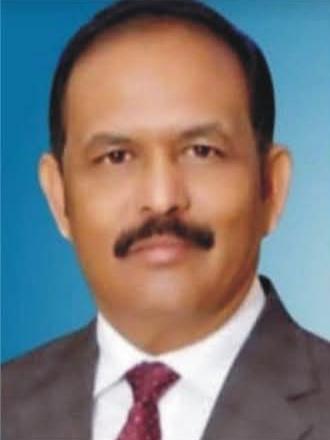Despite the claims of MAGA Prez TRump doesn’t understand the abcd of Americanism (ii)- If Prez Trump is not able to
Managing Human Resource. Mohammed Akmal Pasha.

Of humans, the systems, procedures, methods, theories and organisational structures perhaps all would be bound to become futile rather than of utility, if the human element was removed from the scenario. These are in fact the humans who Labor Day in and day out and transform the litter raw materials into functional finished goods and complete other prolific schemes, given a co-functionality between them and the system. Thus, an appropriate provision of humans remains to be imperative for any organisation regardless of its size, sophistication and synergy - operational, physical or procedural.
Mounting from human to `human resource` predicament, converting a cost into a cost-effective asset is nothing less than a Herculean task. In fact it takes a lot of stake to explore or otherwise transform a human into a human resource.
For, a productive resource is certainly able to render utmost productivity, that is maximizing required output by consuming minimum available inputs, or keeping wastage at the minimum.
Experience has taught that (assuming time variance); exploring productive human resource is as difficult as rendering a raw human fecundity. Ingrained in this difficulty is the cost factor, all the cost of exploring or developing a productive human and after this cost factor comes the "factor cost" that is the fee charged by the factor, though constant in either case. Apart from this, the hassle of exploring exactly what is needed is equally formidable as it entails a lot of beforehand expenditures like cost of advertising, interviewing, testing and also costs in terms of time and botheration of panelists who sometimes come from remote areas.
On the other hand, developing productive human resource is also not a child`s play. The cost of training and developing, and the costs incurred in terms of losses, spoilage and wastage of inputs and then the sub-optimization of all the tangible and intangible resources of the organisation on the part of the employee are highly considerable.
Nevertheless, developing human resource calls for proactive and strategic planning; which would not materialize overnight.
Say, we are aloof of the aggravation of so-called societal issues and succeed in obtaining productive human resource through any means; still other organisational issues centered upon human resource management enter the spectrum. A comprehensive human resource system has to be in place before a person is inducted, a system altogether conducive to the effective and efficient functioning of this resource, all the same evolving a balanced and optimal blend of mechanistic, ergonometric and humanistic phenomena.
Now, a good human resource management remains to be rather an art of placing (and retaining) right persons at the right places at minimum costs, whereby, the employees are not only productive, but also buoyant feeling thereby an essential existence of emotional bond between them and the organisation. Similarly, fulfilling all relevant needs of the employees and thus maintaining the satisfying approaches may be enormously exigent.
Although it may help pre-empt the exploitative and contra-productive unionism, and if the employees want, they may enjoy support of collective bargaining agents (CBA), yet a taxing activity. Again this CBA in turn, may or may not prove productive for the overall performance of the organisation.
This all would depend exclusively upon the core philosophy, mission, vision, policy, culture, leadership, growth potential and competitive supremacy of the organisation, nevertheless coupled with prudent and timely implementation of policies and strategies considering their ramifications. Here again comes the human element, where a truly charismatic leader, an upright entrepreneur rather than a crude executive would better serve the purpose.
Since an executive would be too busy in tinkering with the `execution` of the plans already devised by someone else, and the ultimate responsibility would rest with that very person(s) at whose behest the executive is working, whereas an entrepreneur is involved in the enterprise and is personally concerned about the affairs as if running his own business.
Such is the understanding and approach, which is required on the part of top management, and this only is supposed to accommodate heavenly fantasies and ensure the gestation of their fruition.
In a country like Pakistan, one has to face societal dilemma, where the factors of unemployment and the scarcity of capable candidacy coexist. However, at certain levels the supply of human resource falls short of the demand thereof, and this may lead to factor exploitation. This is in fact flagrantly ubiquitous and has enormously fostered brain drain.
The talented ones fly away and land where they anticipate better rewards, thus they are forced to deprive their motherland of their potential constructive contribution, which happens to be its prerogative.
Again, the twin forces of talent-pool and the reference-culture work together. The organizations have to incur cost of talented ones in order to accommodate non-performing referrals. To keep the flag flying, what becomes indispensable at the organisational level is the maintenance of a balanced and equally productive blend of industrious and otherwise.
Thus one has to walk on a tight rope to operate in such a dismal environment, wherein finding or developing productive human resource, justifying equal employment opportunity, pleasing (and subsequently pleading) bureaucratic forces, entertaining referrals, keeping quality of work life (QWL), functioning within organisational, economic, governmental, societal and legal constraints and still remaining competitive in the industry and valuable in the eyes of stakeholders are all a colossal and ticklish job.
So this ability and capability to operate in such a pathetic, competitive and enervating environment, where a multitude of thwarting internal and external variables are at work, managing human resource is an uphill task, or it calls for a great deal of managerial acumen.
Thus a human resource manger has to be vigilant and sharp enough to understand the locus of variables and correlation thereof and also to read signals from within and outside the organisation, and prudent enough so as to take optimal decisions regarding human resource management issues in particular.
Accomplishing all this yet is not a rocket science; neither is based on laboratory experimentation in concomitance. It is simply led by knowledge, judgment, intuition, and experience; all clubbed in "common sense", which may not be that common.
Mounting from human to `human resource` predicament, converting a cost into a cost-effective asset is nothing less than a Herculean task. In fact it takes a lot of stake to explore or otherwise transform a human into a human resource.
For, a productive resource is certainly able to render utmost productivity, that is maximizing required output by consuming minimum available inputs, or keeping wastage at the minimum.
Experience has taught that (assuming time variance); exploring productive human resource is as difficult as rendering a raw human fecundity. Ingrained in this difficulty is the cost factor, all the cost of exploring or developing a productive human and after this cost factor comes the "factor cost" that is the fee charged by the factor, though constant in either case. Apart from this, the hassle of exploring exactly what is needed is equally formidable as it entails a lot of beforehand expenditures like cost of advertising, interviewing, testing and also costs in terms of time and botheration of panelists who sometimes come from remote areas.
On the other hand, developing productive human resource is also not a child`s play. The cost of training and developing, and the costs incurred in terms of losses, spoilage and wastage of inputs and then the sub-optimization of all the tangible and intangible resources of the organisation on the part of the employee are highly considerable.
Nevertheless, developing human resource calls for proactive and strategic planning; which would not materialize overnight.
Say, we are aloof of the aggravation of so-called societal issues and succeed in obtaining productive human resource through any means; still other organisational issues centered upon human resource management enter the spectrum. A comprehensive human resource system has to be in place before a person is inducted, a system altogether conducive to the effective and efficient functioning of this resource, all the same evolving a balanced and optimal blend of mechanistic, ergonometric and humanistic phenomena.
Now, a good human resource management remains to be rather an art of placing (and retaining) right persons at the right places at minimum costs, whereby, the employees are not only productive, but also buoyant feeling thereby an essential existence of emotional bond between them and the organisation. Similarly, fulfilling all relevant needs of the employees and thus maintaining the satisfying approaches may be enormously exigent.
Although it may help pre-empt the exploitative and contra-productive unionism, and if the employees want, they may enjoy support of collective bargaining agents (CBA), yet a taxing activity. Again this CBA in turn, may or may not prove productive for the overall performance of the organisation.
This all would depend exclusively upon the core philosophy, mission, vision, policy, culture, leadership, growth potential and competitive supremacy of the organisation, nevertheless coupled with prudent and timely implementation of policies and strategies considering their ramifications. Here again comes the human element, where a truly charismatic leader, an upright entrepreneur rather than a crude executive would better serve the purpose.
Since an executive would be too busy in tinkering with the `execution` of the plans already devised by someone else, and the ultimate responsibility would rest with that very person(s) at whose behest the executive is working, whereas an entrepreneur is involved in the enterprise and is personally concerned about the affairs as if running his own business.
Such is the understanding and approach, which is required on the part of top management, and this only is supposed to accommodate heavenly fantasies and ensure the gestation of their fruition.
In a country like Pakistan, one has to face societal dilemma, where the factors of unemployment and the scarcity of capable candidacy coexist. However, at certain levels the supply of human resource falls short of the demand thereof, and this may lead to factor exploitation. This is in fact flagrantly ubiquitous and has enormously fostered brain drain.
The talented ones fly away and land where they anticipate better rewards, thus they are forced to deprive their motherland of their potential constructive contribution, which happens to be its prerogative.
Again, the twin forces of talent-pool and the reference-culture work together. The organizations have to incur cost of talented ones in order to accommodate non-performing referrals. To keep the flag flying, what becomes indispensable at the organisational level is the maintenance of a balanced and equally productive blend of industrious and otherwise.
Thus one has to walk on a tight rope to operate in such a dismal environment, wherein finding or developing productive human resource, justifying equal employment opportunity, pleasing (and subsequently pleading) bureaucratic forces, entertaining referrals, keeping quality of work life (QWL), functioning within organisational, economic, governmental, societal and legal constraints and still remaining competitive in the industry and valuable in the eyes of stakeholders are all a colossal and ticklish job.
So this ability and capability to operate in such a pathetic, competitive and enervating environment, where a multitude of thwarting internal and external variables are at work, managing human resource is an uphill task, or it calls for a great deal of managerial acumen.
Thus a human resource manger has to be vigilant and sharp enough to understand the locus of variables and correlation thereof and also to read signals from within and outside the organisation, and prudent enough so as to take optimal decisions regarding human resource management issues in particular.
Accomplishing all this yet is not a rocket science; neither is based on laboratory experimentation in concomitance. It is simply led by knowledge, judgment, intuition, and experience; all clubbed in "common sense", which may not be that common.
You May Also Like
Pakistan is an Islamic country where the majority religion is Islam while 4% percent of the population is minorities including Hindus, Sikhs,
Every year on 16 November, the world observes International Tolerance Day, established by UNESCO and the United Nations in 1995. The purpose of thi

"Trial of Pakistani Christian Nation" By Nazir S Bhatti
On demand of our readers, I have decided to release E-Book version of "Trial of Pakistani Christian Nation" on website of PCP which can also be viewed on website of Pakistan Christian Congress www.pakistanchristiancongress.org . You can read chapter wise by clicking tab on left handside of PDF format of E-Book.







